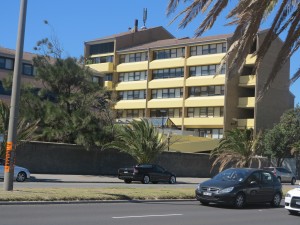Google using TV white space to provide broadband in remote South Africa
Article – From the horse’s mouth
Google Europe Blog: Improving Internet access in Africa with ‘White Spaces’
My Comments
What is “white space”?
A term that we will hear a fair bit of with Internet services is “white space”. This is UHF or VHF radio spectrum that has been newly created as the result of a nation or region switching from an analogue TV service to a digital TV service, which is typically more spectrum-efficient.
How is this relevant
The use of “white space” is becoming very appealing for Internet in rural and remote areas due to the fact that the VHF and UHF frequencies have relatively longer wavelengths than the frequencies used for most wireless-broadband applications. This allows for a longer distance between the base station and remote stations which suits this kind of deployment.
Such setups will be established on the concept of the fixed-wireless broadband setup where the customer-premises equipment will be connected to a fixed antenna (aerial), typically a rooftop aerial.
A lot of the talk about these services relates to whether these setups should be worked on licensed spectrum or the newly-free spectrum be declared in a manner to allow unlicensed use for this application, in a similar vein to Wi-Fi wireless.
In a test that was undertaken in some parts of rural USA by Google, it was proven that white space could be used as a wireless last-mile backhaul without interfering with existing TV stations and other spectrum users. This was through the use of a database which identifies channels that are used that is indexed by GPS-driven geographic parameters. The base station equipment are equipped with a GPS receiver to determine their geographic location and this comes in to play during the commissioning stage in order to determine the useable channels. Of course, the customer-premises equipment would seek for the frequencies associated with services that exist in a similar vein to a cable modem.
The African deployment
After Google had their success with the Kansas City fibre-driven next-generation-broadband rollout when it came to establishing an Internet-service, they put forward the idea of setting up a trial “white-space” fixed-wireless setup in some of the remote parts of South Africa. The idea is to establish access to Internet for the schools that are in this area.
It was organised in partnership with the Independent Communications Authority of South Africa, equivalent to the US’s FCC or UK’s Ofcom communications authorities and is assisted by broadcasters and the industry.
What I would see of this is a chance for African nations to observe this trial and see how it can allow for decent broadband service in to their remote areas. This will include assessing what kind of power is needed at the customer’s end so as to determine whether this could work on a solar power setup that serves one building. Similarly, this could be assessed for establishing cellular-data backhauls for extending or improving access to Internet service via cost-effective wireless-broadband equipment in these areas.

